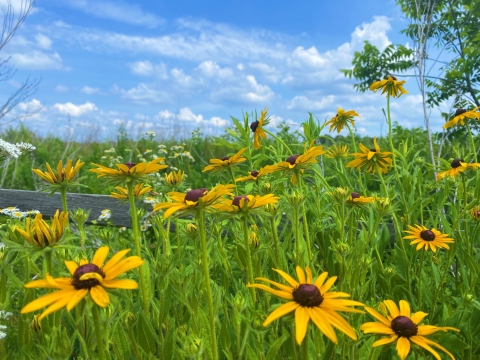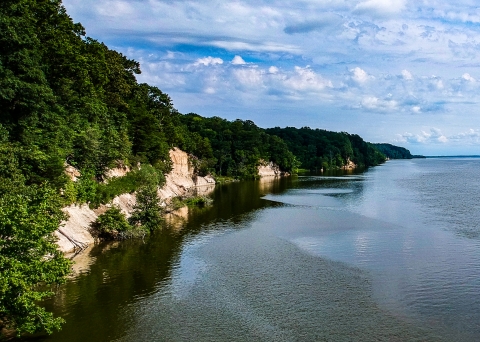Visit Us
There are always things to do at Rappahannock River Valley National Wildlife Refuge! Come view the wildlife, fish, take photos, paddle, and so much more!
The refuge is made up of multiple units, five of which are open to the public. These public access units are open year-round from sunrise to sunset! The public access units and their addresses are located below in the table. Please be reminded that pets are prohibited on the refuge!
Visitors are welcome to stop by the Wilna Unit Administrative Office Monday-Friday from 8 AM- 4:30 PM. Please click the "learn more about visiting" link below for a full list of activities available at each unit and driving directions.
| Wilna Unit/ Administrative Office | 336 Wilna Road Warsaw VA 22572 |
| Hutchinson Unit | 19180 Tidewater Trail Tappahannock, VA 22560 |
| Port Royal Unit | Caroline Street Port Royal, VA 22535 |
| Laurel Grove Unit | 736 Laurel Grove Road Farnham, VA 22460 |
| Wellford Unit | Coates Lane Warsaw, VA 22572 |
| Cat Point Creek Unit (opening date TBD 2022) | 2570 Newland Road Warsaw, VA 22572 |
Location and Contact Information
About Us
The U.S. Fish and Wildlife Service purchased the first tract of land for the refuge in 1996. Rappahannock River Valley National Wildlife Refuge's goal is to protect 20,000 acres of wetlands and its associated uplands along the Rappahannock River and its major tributaries. This refuge was one of the first established specifically for the conservation of an entire watershed and as such, is comprised of multiple units located on both sides of the river. Refuge units are located in Essex, King George, Caroline, Richmond, and Westmoreland counties and include fresh water tidal marsh, forest swamp, upland deciduous forest, mixed pine forest, and grassland habitats.
What We Do
Wildlife conservation is at the heart of the National Wildlife Refuge System. It drives everything on U.S. Fish and Wildlife Service lands and waters managed within the Refuge System, from the purposes for which a national wildlife refuge national wildlife refuge
A national wildlife refuge is typically a contiguous area of land and water managed by the U.S. Fish and Wildlife Service for the conservation and, where appropriate, restoration of fish, wildlife and plant resources and their habitats for the benefit of present and future generations of Americans.
Learn more about national wildlife refuge is established to the recreational activities offered to the resource management tools used. Using conservation best practices, the Refuge System manages Service lands and waters to help ensure the survival of native wildlife species.
The refuge manages its grasslands, wetlands, and forests through a variety of different methods. Mechanical removal, mowing, prescribed burns, and herbicide applications are used to restore and maintain the integrity of these habitats. Tree planting is utilized to promote restoration of forest lands.
Our Species
The Rappahannock River Valley National Wildlife Refuge was established as a refuge with multiple units throughout the Rappahannock River watershed to protect migratory birds and federally endangered and threatened species. To offer protection to federally listed species, the refuge includes habitats of endangered and threatened species including indiana bat, sensitive joint-vetch, small whorled pogonia, northern long-eared bat, eastern black rail and swamp pink. At-risk species that use the refuge include spotted salamander and spotted turtle. Some priority species of concern on the refuge include bald eagles, prothonotary warblers, wood ducks, ovenbirds, wood thrush, grasshopper sparrows, monarch butterflies and native bees. The refuge is home to a variety of species conserving diversity and biological integrity throughout its protected habitats.
Projects and Research
Rappahannock River Valley is made up of multiple units along the river to support watershed conservation with a focus on migratory birds and threatened and endangered species. These units offer a diverse set of resources and habitats such as grasslands, hardwood forests, pine forests, shrubland, freshwater and brackish marshland and riverine habitats which support numerous migratory and breeding birds, at-risk reptiles and amphibians. To meet the needs of these precious resources, we conduct various monitoring surveys as well as habitat management and restoration activities.



